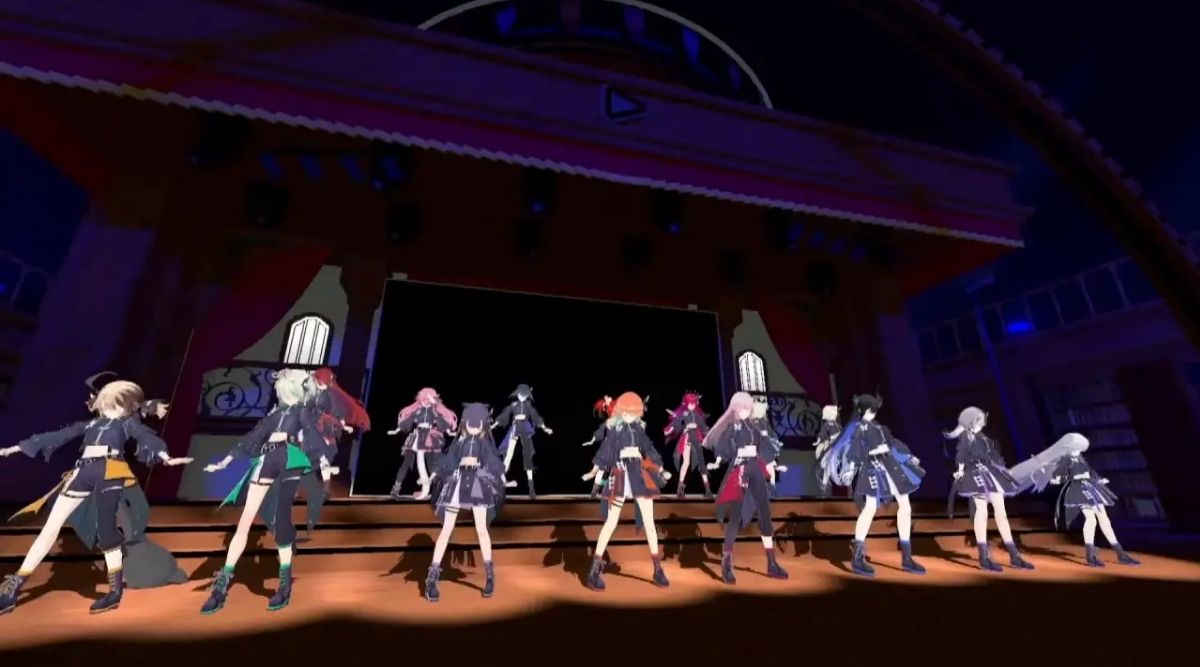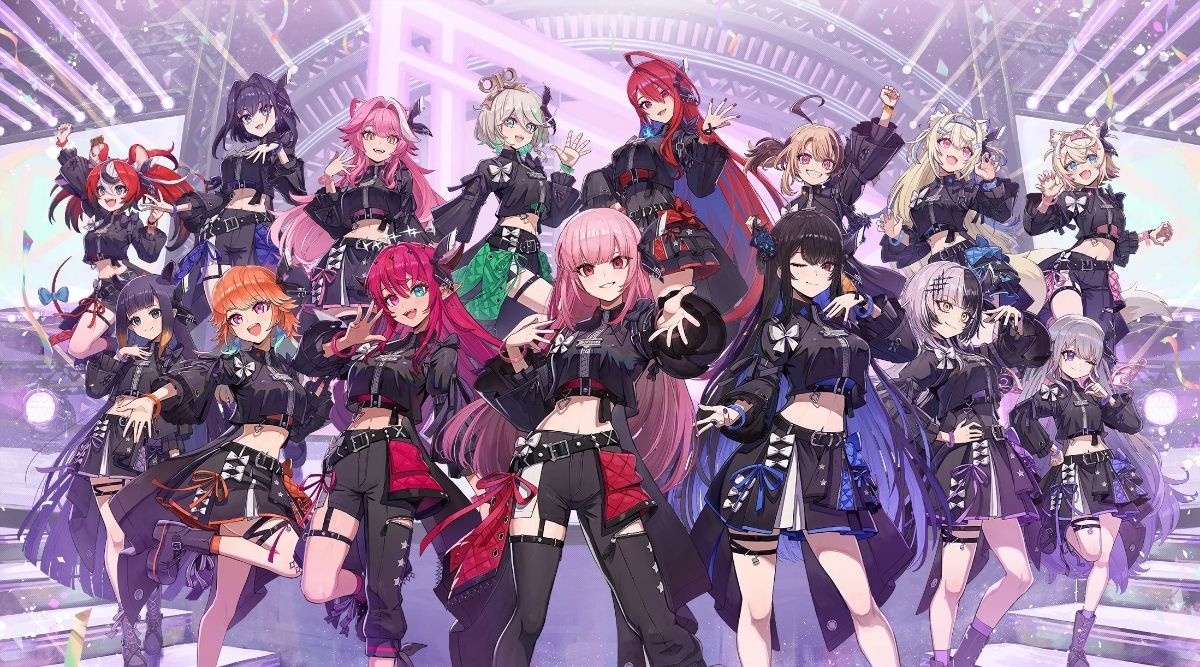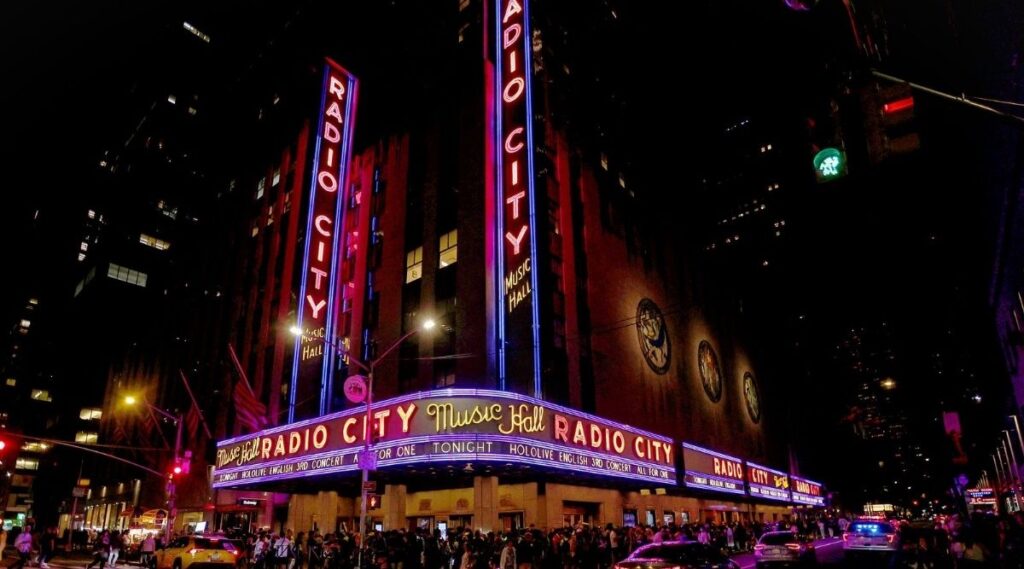Frank Sinatra. David Bowie. Madonna. Names that have filled Radio City Music Hall to the sound of roaring crowds. Add Elizabeth Rose Bloodflame of Hololive EN to that list.
On paper, it might sound absurd: virtual idols, projected onstage in real-time, performing to a packed house of glow-stick-waving fans. But on the night Hololive EN came to New York, coinciding with Anime NYC 2025, the only thing that mattered was the energy in the room. This wasn’t just another concert. It was fandom at its purest.
For the uninitiated, Hololive is a VTuber talent agency based in Japan with dozens of members across multiple language branches: Japanese, English, Indonesian, and more. Each performer streams regularly under a digital avatar with their own lore, personality, and creative style.
They build communities around games, music, and variety content. But when it comes to concerts, the experience transforms. What usually lives on Twitch and YouTube bursts into life through groundbreaking tech that allows these virtual performers to take the stage as if they were really there.
The weight of Radio City Music Hall can’t be overstated. Walking into that venue, you’re reminded of the history—the Rockettes, the Christmas Spectacular, and countless legends who have stood on that stage. To see Hololive EN’s avatars projected there, commanding the same space and pulling in thousands of fans, was surreal. It wasn’t a “niche internet thing” anymore. It was proof that VTubers have crossed a line into the mainstream, carving out their own place in cultural history.
Hololive EN at Radio City Music Hall was a perfect fandom experience.

And the scale of the show matched the venue. Hololive EN packed the lineup with nineteen performers, each with their own songs, personalities, and styles. Between sets, two or three talents would banter with each other onstage, trading jokes and commentary that let their quirks shine.
For newcomers, this was key. Even if you walked in not knowing a single character, by the time the night was over, you’d have met them: their humor, their chemistry, their individuality. It was as much about connection as it was about performance.
The fandom brought its own rituals. Penlights lit the room in a rainbow of coordinated waves, rising and falling in perfect time with the songs. Chants erupted on cue, callouts that every fan seemed to know by heart. For outsiders, this might look strange: why is everyone shouting in unison?
But in the moment, it’s thrilling. You’re not just watching; you’re part of the performance. The audience becomes another instrument, another layer of the show. Even if you didn’t know the calls before walking in, the crowd carried you into the rhythm, teaching by example.
The technology tied it all together. The Hololive members appeared onstage in perfect sync, their movements natural and their interactions seamless. It never felt uncanny; it felt real. You forgot these were virtual avatars and instead saw artists in their element.
Combined with fans covered in merch and cosplayers in the audience dressed as those very same characters, the whole night became a feedback loop of celebration. Fans honored the performers, and the performers gave everything right back.
Inside Radio City Music Hall, the Hololive EN concert was a space where everyone was welcome.

What surprised me most wasn’t just the spectacle, but the sincerity. The stereotype suggests that anime and VTuber fans are antisocial and detached. The reality inside Radio City Music Hall was the opposite. Everyone around me was kind, welcoming, and ready to share the joy. When the music hit, people lost themselves in the moment. On the way out, chants carried into the night, turning the chaos of exiting a packed venue into a communal celebration.
Even the flight home felt different; spotting Hololive merch or dolls in someone’s hands was enough to spark a smile or a nod. You didn’t have to say anything. The connection was instant. That’s the rarest part: in a world where fandoms often feel fractured or cynical, this felt like belonging.
Personally, Elizabeth Rose Bloodflame was that revelation for me. I had picked her almost at random, introduced by a friend’s photo. But onstage, she floored me. Her voice, her presence, the way she drew the audience in. It was undeniable. That’s the power of Hololive. Even if you enter as a complete newcomer, the chance of finding someone to connect with, someone to root for, is almost guaranteed.
Across two nights, Hololive EN delivered four hours of nonstop music and joy. No phones in the air, no half-distracted scrolling; just people living in the moment. The concert was accessible for all ages, free from cynicism, and completely devoid of the fanservice that outsiders often assume defines the space. It was simply about music, performance, and community.
Which is why pairing the concert with Anime NYC was such a natural fit. The convention already thrives on shared passion, with strangers bonding over cosplay, panels, and merchandise hunts. Hololive amplified that, creating an anchor event that felt both perfectly aligned with the weekend and bigger than it.
For some, Anime NYC was the main draw, and Hololive the cherry on top. For others, the concert was the reason to make the trip. Together, they felt like a match made in heaven: one celebrating the culture of anime, the other showing where that culture is evolving next.
Hololive EN at Radio City Music Hall was more than just a concert. It was a reminder of what fandom can be when it’s at its best: joyful, welcoming, and sincere. And walking out into the New York night, chants still echoing, it was hard not to feel like you’d just been part of something bigger than yourself.








